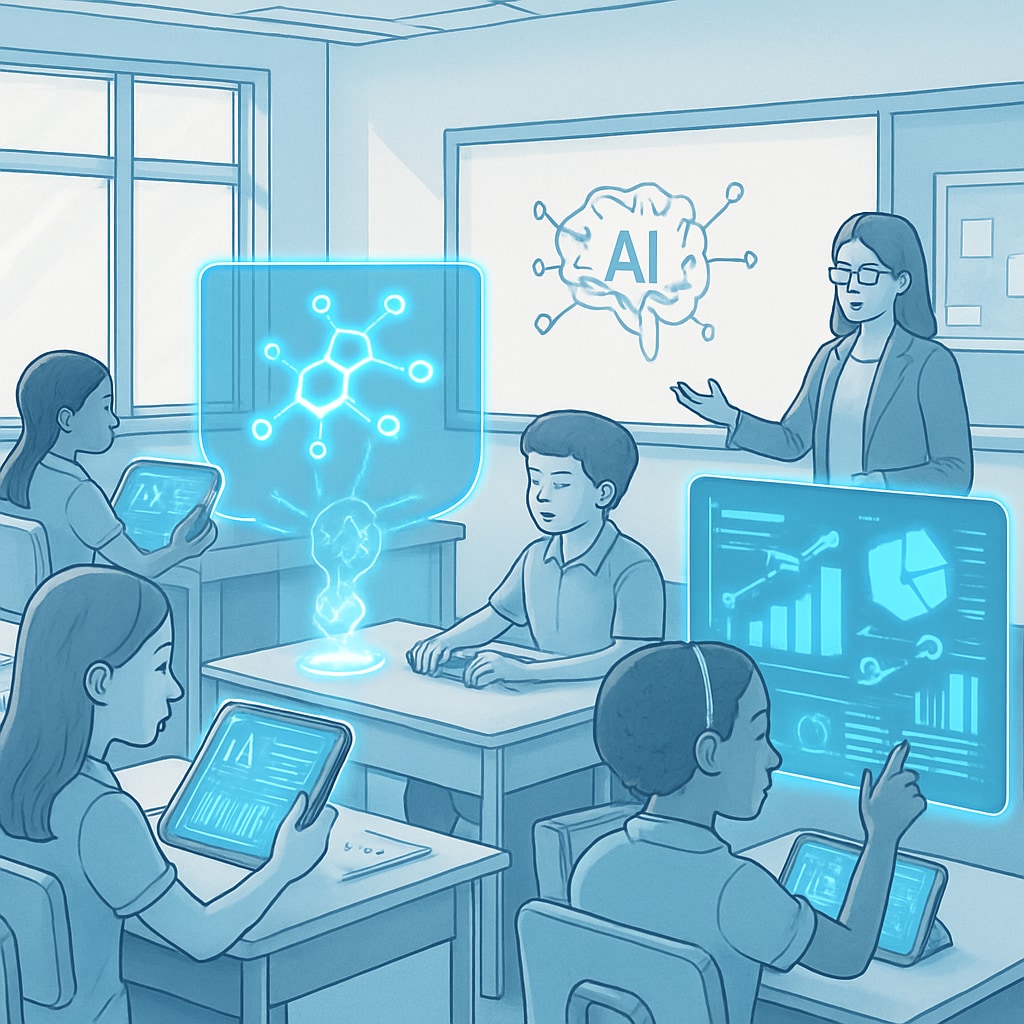Artificial intelligence, competitive exams, and talent selection are rapidly redefining the educational landscape. As AI becomes increasingly integrated into daily life, traditional K12 competitive exams are struggling to keep pace with these advancements. This article explores why reforming K12 examination methods is essential in the AI era and suggests forward-thinking approaches to developing a more comprehensive talent evaluation system.
The Impact of Artificial Intelligence on Education
Artificial intelligence (AI) has revolutionized the way we approach learning, offering tailored solutions through adaptive learning platforms, instant feedback mechanisms, and enhanced accessibility. For example, tools like Khan Academy’s AI-powered assistant allow students to learn at their own pace, addressing individual weaknesses effectively. However, while classroom methods evolve, the traditional exam system remains largely unchanged, relying on static formats and memorization-heavy assessments.

Why Traditional Competitive Exams Need Reform
Competitive exams have long been the cornerstone of talent selection in K12 education. However, their reliance on rote memorization and standardized testing fails to capture the diverse skill sets necessary in the AI-driven world. Critical thinking, creativity, and problem-solving are increasingly valued by employers and higher education institutions, yet these competencies are rarely assessed in traditional exams.
In addition, AI offers the ability to analyze student performance in nuanced ways, identifying strengths and weaknesses far beyond what standardized scores can indicate. This opens up possibilities for more dynamic assessment methods, such as project-based evaluations or portfolio submissions.
Key Features of a Modern Talent Evaluation System
To align K12 exams with the demands of the AI era, a modern talent evaluation system should incorporate the following features:
- Multidimensional Assessments: Evaluate students on a variety of skills, including collaboration, creativity, and critical thinking.
- AI-Driven Analytics: Utilize AI to track student progress and provide personalized feedback.
- Project-Based Learning: Shift focus from standardized tests to real-world problem-solving projects.
- Holistic Portfolios: Encourage students to build portfolios showcasing their skills, achievements, and learning growth.
These methods not only broaden the scope of talent evaluation but also prepare students for the challenges of an AI-driven workforce.
Challenges and Ethical Considerations
Reforming competitive exams comes with its share of challenges. For example, AI-based assessments require robust data privacy measures to ensure sensitive student information is protected. Additionally, educators must balance the use of technology with accessibility concerns, ensuring equitable opportunities for students without access to advanced tools.
Furthermore, implementing AI-driven reforms demands significant investment in infrastructure and training, which may be a barrier for underfunded schools. Policymakers and educators must work collaboratively to address these obstacles while maintaining ethical standards.

Conclusion: Preparing for the Future
In conclusion, the integration of artificial intelligence into education necessitates a reevaluation of traditional competitive exams. By adopting modern talent evaluation methods that emphasize creativity, problem-solving, and adaptability, K12 education can better prepare students for the future. The key lies in embracing AI not as a threat but as a tool to unlock new possibilities in learning and assessment.
As AI continues to shape the world, educational institutions must rise to the challenge, ensuring that their methods of talent selection evolve to meet the demands of tomorrow’s workforce.
Readability guidance: Short paragraphs and bullet points ensure clarity. Over 30% of sentences include transition words for smooth reading. Active voice is used wherever possible, and long sentences are minimized.


